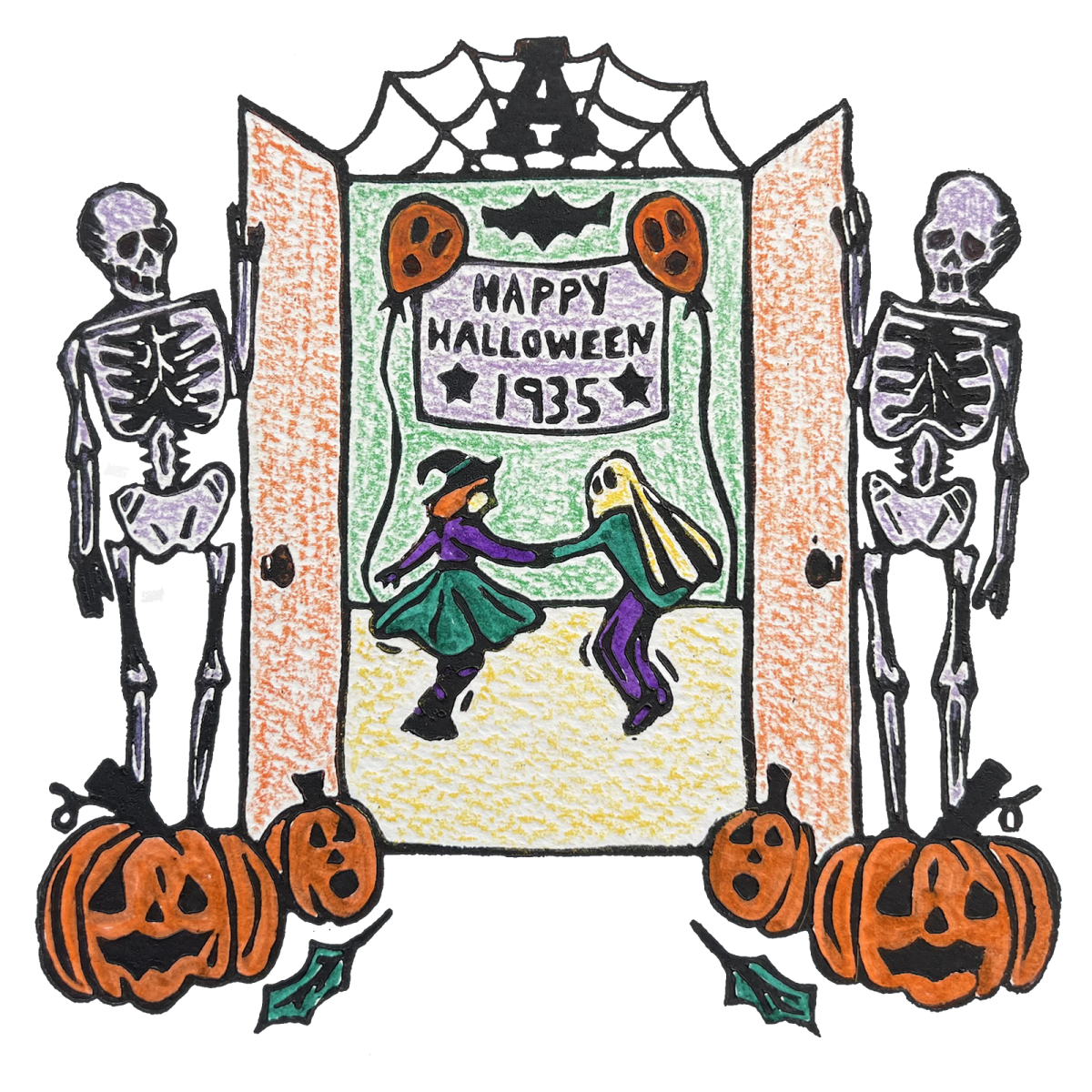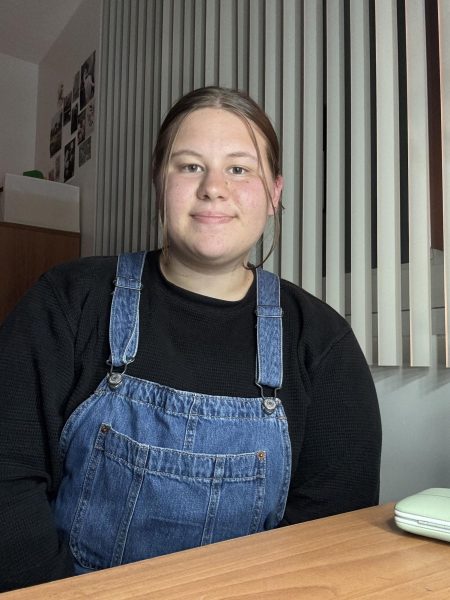What’s the first thing that comes to your mind when you think of Halloween? Is it an array of jack-o’-lanterns, ghosts, goblins, witches and skeletons? A deep dive into the religious traditions that began with the Celtics and Anglo-Saxons? Or is it the allure of dressing up and getting drunk with your friends at a Halloweekend party? All of the aforementioned images have been conjured by App State reporters quite vividly over the past 90 years.
These facets, including the goings-on around campus during this spooky holiday, have been explored in The Appalachian since 1934. Following a plunge into the archives, it’s reasonable to question whether the parties have noticeably peaked at a certain point or another.
The answer lies in a search through 13 past articles, which resolves that the Halloween shindigs were undeniably superior in the 1930s.
In 1934, App State students embraced the dramatics of Halloween, holding parties that had faculty members pretending to murder each other, music performed by peers that added to the haunting atmosphere, attendees dressed as everything from ghosts to goblins and girls acting catty as “no party was complete without the cats.”
The trend continued the following year with a Halloween party that featured a sword fight and an orchestra for means of entertainment. The backdrop included spooks, goblins and witches stationed along the halls. Autumn leaves, corn stalks and jack-o’-lanterns cemented the aesthetic of the party, a result of the careful planning by master of ceremonies, Gene Wike.
In the same 1935 issue, the supernatural aspects of Halloween were documented. Hallow Even, a festival worshiping saints, was “an eve of gayety and pranks because on the morrow all spirits, good and evil, will appear on earth,” which provided the religious undertones to the celebration. Through this lens, experimenting with witchcraft and mischief-making honored the presence of a supernatural influence and superstitious customs that have evolved over a 13-century period. This article alluded to the complex nature of Halloween the parties of this generation seem to be lacking.
In 1938, a combination of 700 students and faculty members gathered in a gym covered end to end in black and orange crepe paper and leaves. Skeletons were placed for all attendees to take in. The party consisted of a costume contest –– the winning costume being Father Time –– tap dancing, the play “Knives from Syria” and live music.
By the 1940s, the Halloween parties began to be less elaborate. An article in 1942 revealed the party planning was a race against time. The event was described as not spectacular but entertaining nonetheless. According to the writer of the piece, word of the party reached the president of the student body two days before Halloween, yet still remained relatively well-planned regardless of these circumstances.
The festivities in 1944, however, redeemed the previous years, with a host of ghosts, goblins, witches and pirates described as glowing with the enthusiasm of Halloween. The gym floor was decorated with corn stocks, pumpkins and multi-colored leaves. A “hill-billy band” played as the party-goers square danced. There were bingo games, candy walks, a mystic soothsayer and a house of horrors featuring dead men’s brains, eyeballs and bones.
By the 1950s, entire campus parties seemed to fizzle in popularity, and specific groups were left to pick up the pieces. The article “Girls in Lovill Stage Ghost Nite” by Ruth Foltz described Lovill’s halls party which consisted of ghost stories, pranks, their own version of a house of horrors, fortune telling and a costume masquerade. The outlier of this was a party held in 1955 held in the men’s gym. The line-up of events had square dancing, a talent show and cake walks.
By the 1960s and 70s, The Appalachian presented more articles about the history of Halloween festivities than the actual parties. These pieces cement the idea that parties drawing back to religious and spiritual narratives through their elements and activities are superior.
According to an article run in 1972, the name of the holiday itself means holy evening. It is traditionally celebrated in the United States and Europe. Various countries in Europe refer to this holiday by different names, with Hallows’ Eve in Ireland and Nutcracker Night in England. Halloween is actually only the precursor of the festival All Saints’ Day which takes place on Nov. 1.
This celebration is a mix of old Christian and Pagan traditions. Each commonplace element we consider to be a perfectly secular component of Halloween dates back to these customs. The Druids, a group of priests in ancient Gaul and Britain, historically believed that ghosts, witches, fairies and elves arrived to harm people on Halloween. Fun fact: Druids would conduct an autumn festival named Samhain, or “summer’s end.”
The cat, which was once revered as sacred, tells the story of a man transformed into a feline as a punishment for evil deeds in many folklore tales. Finally, the jack-o’-lantern is derived from an Irish tale surrounding a man named Stingy Jack.
A 1982 interview of App State faculty talking about their memories of Halloween exhibited an assortment of experiences. One specific anecdote from an infirmary physician included an interesting perspective on Halloween: “Enjoy the Halloween spirit, but beware, because it is a mythical, evil thing that brings out the satan spirit in man. It always has and always will.”
While this may be an extreme take on this celebration, there are very real dangers when it comes to Halloween parties today.
Currently, the main focus across all college campuses on Halloween is the act of getting drunk. This holiday has become one of the biggest party weekends on campuses. A study reported that college students drank an average of 1.4 more drinks on Halloween night than any other weekend.
This led to more recent articles by The Appalachian’s covering more recent articles to cover topics like “How to navigate Halloweekend,” a piece written in 2023 that provides advice on how to stay safe during all of the festivities. Party culture has kind of detracted from the ways that Halloween can be fun without alcohol. It’s hard to take in all of the culture that can be found in this holiday, or activities that bring the student body together if you’re falling down drunk.
This is not meant to put anyone down or discourage people from letting loose and having fun with their friends, but a certain child-like wonder and enjoyment in the actual celebration needs to make its return. The article “Adult Halloween sucks” perpetuates a similar point, focusing on the nostalgia of Halloween as a kid.
Maybe it’s time to shake things up and party like it’s 1934!
Para leer en español haz clic aquí.


